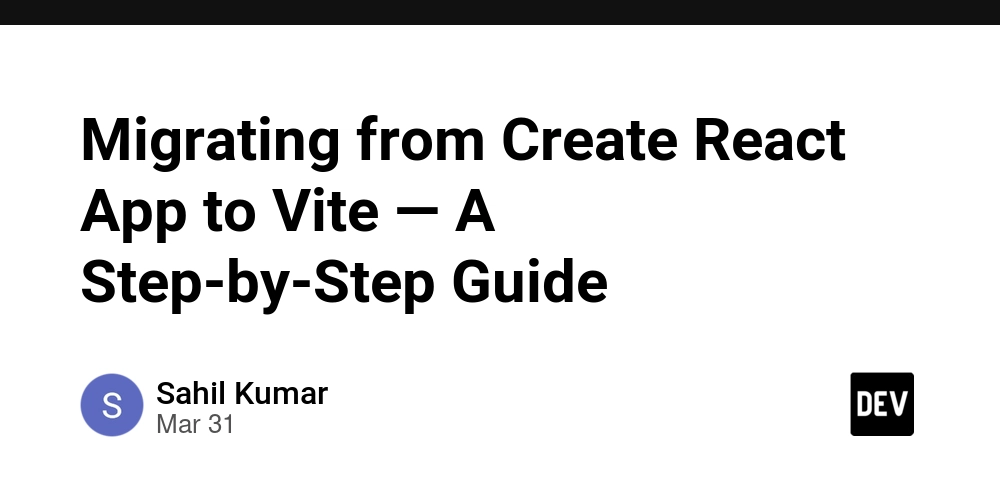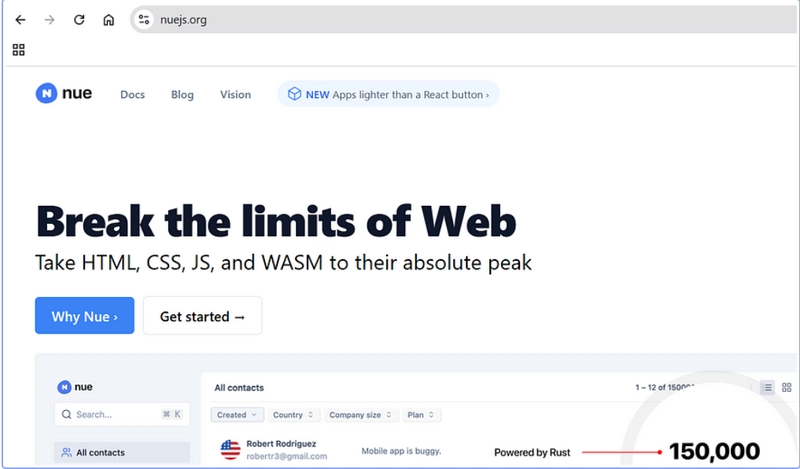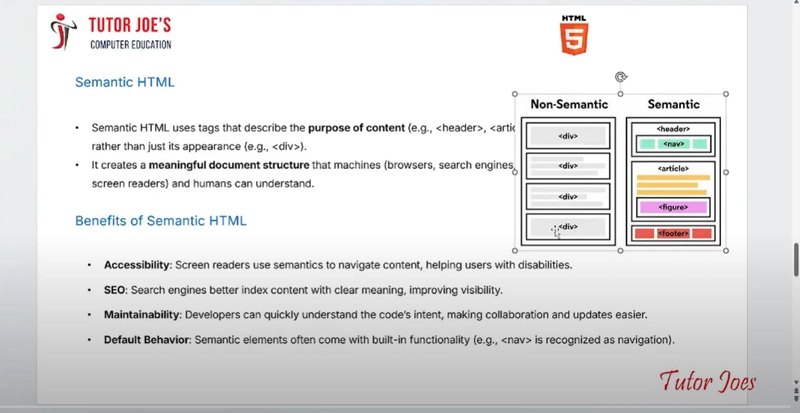Migrating from Create React App to Vite — A Step-by-Step Guide
Migrating from Create React App (CRA) to Vite enhances development speed and efficiency, making it ideal for industry-level projects. CRA’s reliance on Webpack often results in slower builds and hot module replacement (HMR). Vite, leveraging ES modules, provides instant HMR, faster builds, and a leaner setup. This guide walks through the migration process, covering essential updates for configurations, environment variables, TypeScript, testing, and build optimizations. 1. Install Required Packages First, install the necessary dependencies for Vite: npm install vite @vitejs/plugin-react --save-dev vite is the core build tool and development server that provides fast bundling and HMR. @vitejs/plugin-react enables React-specific optimizations like Fast Refresh and JSX transformation. 2. Create Vite Configuration File Create a vite.config.ts file in the root directory: import { defineConfig } from "vite"; import react from "@vitejs/plugin-react"; export default defineConfig({ plugins: [react()], server: { port: 3000, open: true, }, }); server.port specifies the port on which the Vite development server will run. By default, Vite uses port 5173, by setting it to 3000 makes it consistent with CRA. server.open automatically opens the browser when the development server starts. 3. Move index.html to Root Move public/index.html to the project root and update src: Unlike Webpack, which dynamically injects the src attribute into index.html using plugins like HtmlWebpackPlugin, Vite requires you to explicitly define the entry file. Since Vite does not modify index.html dynamically, specifying the src ensures the application loads correctly. Now, remove all %PUBLIC_URL% occurrences in the index.html file: 4. Update Script Commands Replace the CRA scripts in package.json with Vite equivalents: "scripts": { "start": "vite", "build": "vite build", } 5. Update Environment Variables Vite exposes env variables under import.meta.env object as strings automatically. To prevent accidentally leaking env variables to the client, only variables prefixed with VITE_ are exposed to your Vite-processed code. Update Variable Declarations: Replace REACT_APP_ with VITE_ in all your environment variables // CRA REACT_APP_STAGING = staging; // VITE VITE_STAGING = staging; Update Variable Usage: // CRA export const config = process.env.REACT_APP_STAGING ? "staging" : "dev"; // VITE export const config = import.meta.env.VITE_STAGING ? "staging" : "dev"; 6. Improve TypeScript Support and tsconfig.json If your project uses TypeScript, follow these steps to ensure compatibility and improved performance. Update the following properties in tsconfig.json: { "compilerOptions": { "moduleResolution": "bundler", "isolatedModules": true, "types": ["vite/client"] }, "include": ["vite.config.ts"] } One thing you should know about Vite is that Vite only performs transpilation on .ts files and does NOT perform type checking. It assumes type checking is taken care of by your IDE and build process. The reason Vite does not perform type checking as part of the transform process is because the two jobs work fundamentally differently. Transpilation can work on a per-file basis and aligns perfectly with Vite's on-demand compile model. In comparison, type checking requires knowledge of the entire module graph. Shoe-horning type checking into Vite's transform pipeline will inevitably compromise Vite's speed benefits. Adding type checking support in Development During development, if you need more than IDE hints, Vite recommends running tsc --noEmit --watch in a separate process, or use vite-plugin-checker if you prefer having type errors directly reported in the browser. In this guide we will go with the second approach. Install vite-plugin-checker: npm install --save-dev vite-plugin-checker Update vite.config.ts: import tsChecker from "vite-plugin-checker"; export default defineConfig({ plugins: [tsChecker({ typescript: true })], }); Adding type checking support for Production Builds For production builds, we will run tsc --noEmit in addition to Vite's build command. Update package.json: "scripts": { "build": "tsc --noEmit && vite build", } The --noEmit flag prevents the compiler from generating JavaScript output files. 7. Convert Files to .jsx and .tsx Rename files accordingly: .js → .jsx .ts → .tsx Why is this required ? Vite avoids processing all .js and .ts files for JSX or TypeScript syntax by default to prevent unnecessary overhead, which could slow down the development server and build times. Instead, by explicitly using .jsx and .tsx extensions, Vite selectively applies transformations only to the files that require them. When encountering these files, Vite l

Migrating from Create React App (CRA) to Vite enhances development speed and efficiency, making it ideal for industry-level projects. CRA’s reliance on Webpack often results in slower builds and hot module replacement (HMR). Vite, leveraging ES modules, provides instant HMR, faster builds, and a leaner setup. This guide walks through the migration process, covering essential updates for configurations, environment variables, TypeScript, testing, and build optimizations.
1. Install Required Packages
First, install the necessary dependencies for Vite:
npm install vite @vitejs/plugin-react --save-dev
-
viteis the core build tool and development server that provides fast bundling and HMR. -
@vitejs/plugin-reactenables React-specific optimizations like Fast Refresh and JSX transformation.
2. Create Vite Configuration File
Create a vite.config.ts file in the root directory:
import { defineConfig } from "vite";
import react from "@vitejs/plugin-react";
export default defineConfig({
plugins: [react()],
server: {
port: 3000,
open: true,
},
});
-
server.portspecifies the port on which the Vite development server will run. By default, Vite uses port5173, by setting it to3000makes it consistent with CRA. -
server.openautomatically opens the browser when the development server starts.
3. Move index.html to Root
Move public/index.html to the project root and update src:
Unlike Webpack, which dynamically injects the src attribute into index.html using plugins like HtmlWebpackPlugin, Vite requires you to explicitly define the entry file. Since Vite does not modify index.html dynamically, specifying the src ensures the application loads correctly.
Now, remove all %PUBLIC_URL% occurrences in the index.html file:
rel="icon" href="%PUBLIC_URL%/favicon.ico" />
rel="icon" href="/favicon.ico" />
4. Update Script Commands
Replace the CRA scripts in package.json with Vite equivalents:
"scripts": {
"start": "vite",
"build": "vite build",
}
5. Update Environment Variables
Vite exposes env variables under import.meta.env object as strings automatically. To prevent accidentally leaking env variables to the client, only variables prefixed with VITE_ are exposed to your Vite-processed code.
Update Variable Declarations:
Replace REACT_APP_ with VITE_ in all your environment variables
// CRA
REACT_APP_STAGING = staging;
// VITE
VITE_STAGING = staging;
Update Variable Usage:
// CRA
export const config = process.env.REACT_APP_STAGING ? "staging" : "dev";
// VITE
export const config = import.meta.env.VITE_STAGING ? "staging" : "dev";
6. Improve TypeScript Support and tsconfig.json
If your project uses TypeScript, follow these steps to ensure compatibility and improved performance.
Update the following properties in tsconfig.json:
{
"compilerOptions": {
"moduleResolution": "bundler",
"isolatedModules": true,
"types": ["vite/client"]
},
"include": ["vite.config.ts"]
}
One thing you should know about Vite is that Vite only performs transpilation on .ts files and does NOT perform type checking. It assumes type checking is taken care of by your IDE and build process.
The reason Vite does not perform type checking as part of the transform process is because the two jobs work fundamentally differently. Transpilation can work on a per-file basis and aligns perfectly with Vite's on-demand compile model. In comparison, type checking requires knowledge of the entire module graph. Shoe-horning type checking into Vite's transform pipeline will inevitably compromise Vite's speed benefits.
Adding type checking support in Development
During development, if you need more than IDE hints, Vite recommends running tsc --noEmit --watch in a separate process, or use vite-plugin-checker if you prefer having type errors directly reported in the browser. In this guide we will go with the second approach.
Install vite-plugin-checker:
npm install --save-dev vite-plugin-checker
Update vite.config.ts:
import tsChecker from "vite-plugin-checker";
export default defineConfig({
plugins: [tsChecker({ typescript: true })],
});
Adding type checking support for Production Builds
For production builds, we will run tsc --noEmit in addition to Vite's build command.
Update package.json:
"scripts": {
"build": "tsc --noEmit && vite build",
}
The
--noEmitflag prevents the compiler from generating JavaScript output files.
7. Convert Files to .jsx and .tsx
Rename files accordingly:
-
.js→.jsx -
.ts→.tsx
Why is this required ?
Vite avoids processing all .js and .ts files for JSX or TypeScript syntax by default to prevent unnecessary overhead, which could slow down the development server and build times. Instead, by explicitly using .jsx and .tsx extensions, Vite selectively applies transformations only to the files that require them. When encountering these files, Vite leverages esbuild to efficiently transform JSX or TypeScript syntax into standard JavaScript, ensuring faster builds and a more optimized development workflow.
8. Add Absolute Path Support & Path Aliasing
In the Vite configuration file, paths can be resolved using the config.resolve property. Since manually defining numerous paths can be tedious, we use the vite-tsconfig-paths package. This package enables Vite to resolve imports using TypeScript’s path mapping automatically.
Install vite-tsconfig-paths:
npm install --save-dev vite-tsconfig-paths
Update vite.config.ts:
import tsconfigPaths from "vite-tsconfig-paths";
import path from "path";
export default defineConfig({
plugins: [tsconfigPaths()],
resolve: {
alias: {
"@assets": path.resolve(__dirname, "src/assets"),
},
},
});
If any of your path aliases do not work as expected with vite-tsconfig-paths, you can manually define them as shown above.
9. Add SVG Support
Install vite-plugin-svgr:
npm install --save-dev vite-plugin-svgr
Update vite.config.ts:
import svgr from "vite-plugin-svgr";
export default defineConfig({
plugins: [svgr()],
});
Import SVG files as components:
import ChartIcon from "@assets/icons/Charts.svg?react";
10. Configure Production Build & Target
Update vite.config.ts:
export default defineConfig({
build: {
outDir: "build",
target: "es2021",
},
});
build.outDirspecifies the output directory for the built files. By default, Vite outputs the build to the dist folder, but here it is customized to match CRA's default output directory.build.targetsets the JavaScript target version for the output files. The default value is "modules", ensuring compatibility with modern browsers that support ES module syntax.For older browser compatibility, refer to the Vite Browser Compatibility Guide
11. Add Testing with Vitest
Install testing dependencies:
npm install --save-dev vitest jsdom @testing-library/react @testing-library/jest-dom @vitest/ui
Update tsconfig.json:
"compilerOptions": {
"types": ["vitest/globals"]
},
Update package.json:
"scripts": {
"test": "vitest --ui"
}
- The
--uiflag invitest --uistarts the Vitest UI, providing a visual test runner interface. It allows you to view test results, rerun specific tests, and debug failing tests interactively within a browser-based interface.
Update vite.config.ts:
export default defineConfig({
test: {
globals: true,
environment: "jsdom",
setupFiles: /* */ ,
include: ["src/**/*.test.*"],
},
});
Update test setup file:
import { expect } from "vitest";
import matchers from "@testing-library/jest-dom/matchers";
// extends Vitest's expect method with methods from react-testing-library
expect.extend(matchers);
Update Test Files:
-
describe,expect,it, andtestwork the same as in Jest - Replace
jest.fn()withvi.fn() - For further changes, refer to Vitest Migration Guide
12. Adding Code Coverage
We will integrate Istanbul to generate code coverage reports.
Installation:
npm install --save-dev @vitest/coverage-istanbul
Update Script in package.json:
"scripts": {
"test:coverage": "vitest run --coverage"
}
Update vite.config.ts:
export default defineConfig({
test: {
coverage: {
provider: "istanbul",
reporter: ["lcov"],
include: /* Specify directory or files here */,
},
},
});
13. Enable Source Maps & Add Bundle Visualizer
To enable source maps in Vite, update the build.sourcemap option in the Vite configuration:
Update vite.config.ts:
export default defineConfig({
build: {
sourcemap: true,
},
});
Since Vite uses Rollup for production builds, we will install rollup-plugin-visualizer to visualize source maps.
Install rollup-plugin-visualizer:
npm install --save-dev rollup-plugin-visualizer
Update vite.config.ts:
import { visualizer } from "rollup-plugin-visualizer";
export default defineConfig({
plugins: [visualizer()],
});
To prevent the visualizer from running with every build, we will create a separate script for it.
Update package.json:
"scripts": {
"stats": "vite build && open stats.html"
}
14. Setting Global Variable
Vite does not define a global field on window like Webpack does. Some libraries rely on this behavior because Webpack, being older, has established it as a common practice.
Update index.html:
15. Remove CRA and Webpack-Related Configurations
Finally, delete unnecessary Webpack-related files and dependencies, including:
- Remove
react-scriptscommands - Uninstall Jest-related packages
- Uninstall the following Webpack-related dependencies:
webpackwebpack-bundle-analyzer
References
Contribute
If you feel any step can be improved, more details can be added, or new steps should be included, please feel free to contribute!
Check out the repository and submit a pull request:
GitHub Repository











































































































































































![[The AI Show Episode 142]: ChatGPT’s New Image Generator, Studio Ghibli Craze and Backlash, Gemini 2.5, OpenAI Academy, 4o Updates, Vibe Marketing & xAI Acquires X](https://www.marketingaiinstitute.com/hubfs/ep%20142%20cover.png)




























































































































![[DEALS] The Premium Learn to Code Certification Bundle (97% off) & Other Deals Up To 98% Off – Offers End Soon!](https://www.javacodegeeks.com/wp-content/uploads/2012/12/jcg-logo.jpg)


![From drop-out to software architect with Jason Lengstorf [Podcast #167]](https://cdn.hashnode.com/res/hashnode/image/upload/v1743796461357/f3d19cd7-e6f5-4d7c-8bfc-eb974bc8da68.png?#)








































































































.png?#)


































_Christophe_Coat_Alamy.jpg?#)
.webp?#)
 (1).webp?#)






































































































![Apple Considers Delaying Smart Home Hub Until 2026 [Gurman]](https://www.iclarified.com/images/news/96946/96946/96946-640.jpg)
![iPhone 17 Pro Won't Feature Two-Toned Back [Gurman]](https://www.iclarified.com/images/news/96944/96944/96944-640.jpg)
![Tariffs Threaten Apple's $999 iPhone Price Point in the U.S. [Gurman]](https://www.iclarified.com/images/news/96943/96943/96943-640.jpg)

































































































































